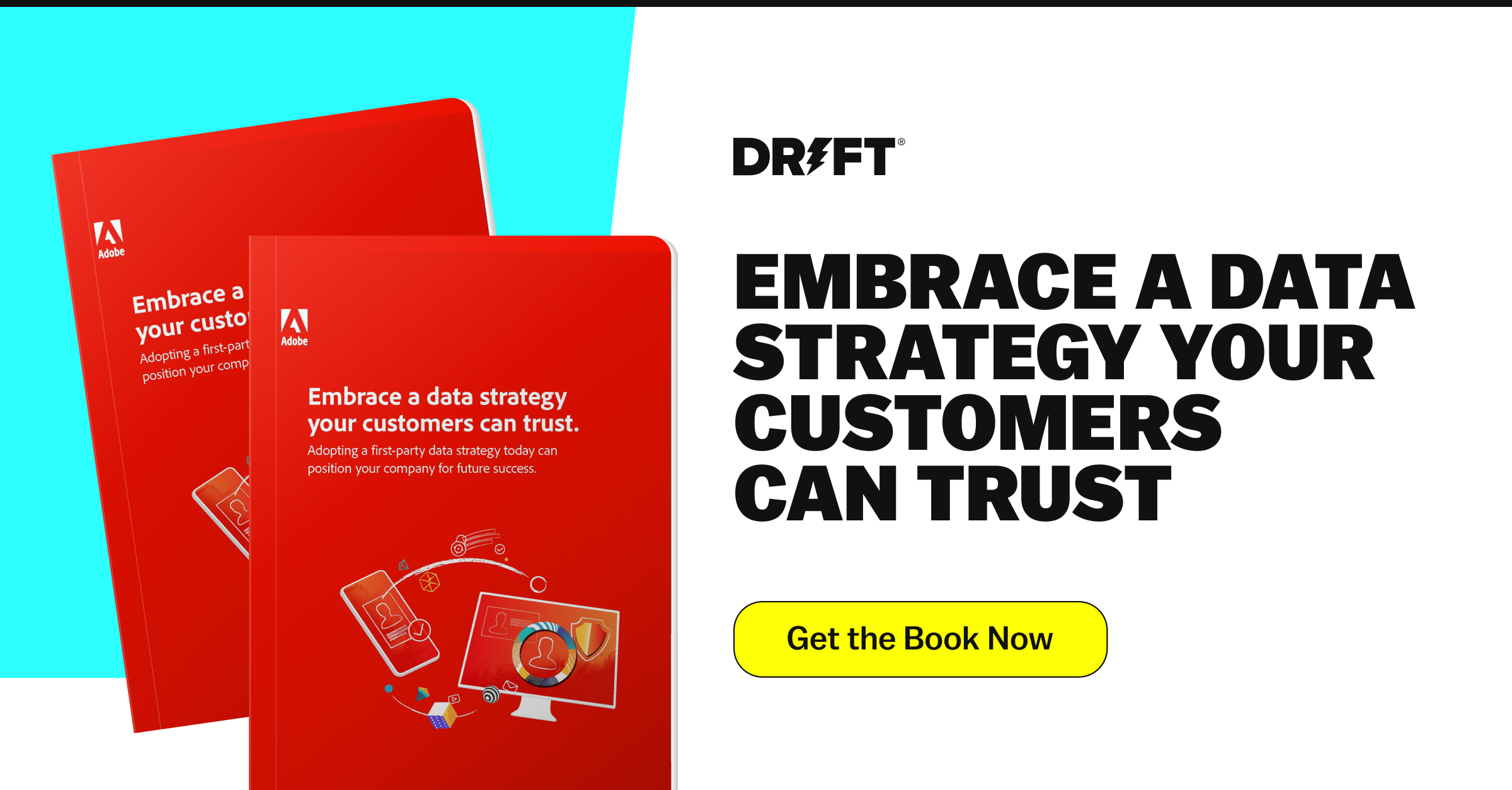By 2024, Google Chrome (the biggest browser in the market) will have phased out third-party tracking cookies for good — which means they will no longer be viable tools for creating the personalized online experiences that modern buyers expect. And while Google’s latest delay adds some buffer to the previous timeline, 2024 is not that far away.
Deep breaths.
But what if I told you a world without third-party cookies is nothing to fear?
Or, I’ll do you one better: What if I told you that the end of third-party cookies will usher in a new era of highly personalized experiences that will delight your customers?
It’s true. The cookieless future doesn’t (and shouldn’t) mean giving up on personalization. It just means switching tactics to deliver the experience that your buyers and customers want while also driving greater results.
Hi there 👋 I’m Ruth, Senior Website Manager at Drift. And today, I’m going to explain how you can future-proof your website personalization strategy using first-party data and Conversational Marketing.
Ready for a taste of the cookieless future? Let’s go 🍪
I was joined by fellow Drifter and VP of Revenue Marketing, Justin Keller, on a webinar to discuss personalization in the cookieless world. If you want to watch the full recording, click here. Otherwise, keep reading for all the insights 💡
Buyers Want Personalization — Without the Creepiness
Once upon a time, B2B websites could get away with being boring. Everything was navy blue, with stock photos of people shaking hands. That time has (thankfully) long since passed.
Over the past several years, the immersive experiences offered by B2C companies have influenced B2B buyer expectations. According to a 2021 report by McKinsey:
- 71% of consumers expect companies to deliver personalized interactions.
- And 76% of consumers get frustrated when this doesn’t happen.
For B2B buyers, personalization is far from optional. Instead of being sold to, buyers want to have authentic relationships with sellers. And that’s not even mentioning how much the COVID-19 pandemic has intensified our desire for human connection. As Justin summed up: “We need to, as B2B marketers, focus on the human element.”
The hurdle for marketers is that buyers don’t want personalized experiences at the expense of their privacy. Many recent privacy regulations and browser updates have been fueled by public concerns about mass data leaks and being tracked online.
Simply put, consumers don’t trust third-party cookies. And if you continue to use them, it will also erode trust in your brand.
Why Conversational Marketing & First-Party Data Is the Future of Personalization
So, what does all this mean for you as a marketer? Well, as Justin puts it: “Without that data to help inform us, we’re going to be forced to get back to the craft of marketing and to providing really relevant and helpful experiences to the people we care most about.”
In fact, the loss of third-party data is an opportunity for you to refocus your personalization efforts around first-party data.
Unlike third-party cookies, which are placed by third-party sites to track a person’s browsing behavior across the internet, first-party cookies contain data that site visitors share with you willingly, including onsite behavior and information provided through chats, forms, and other means. First-party cookies are stored and read solely by your website, making them the perfect solution for building stronger relationships with buyers and customers while addressing their growing privacy concerns.
But because first-party data is mainly captured through voluntary interactions, you’ll need a tool that will allow you to connect with site visitors and better understand their intent.
And that’s where Conversational Marketing comes in.
Conversational Marketing tools enable you to create the personalized, human experience that modern buyers crave. Unlike traditional B2B forms, conversations are fluid — chatbots and live chat solutions provide an open space for site visitors to share information about themselves that they would not have had the chance to share through a form.
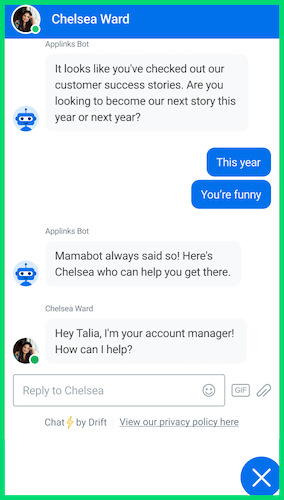
“Live and chatbot experiences do such a better job of understanding what a visitor wants,” Justin said. “And they can direct [visitors] in the most helpful way, providing them a much more personalized and fluid experience when they come to visit you.”
4 Personalization Strategies That Leverage First-Party Data
With a Conversational Marketing tool like Drift, you will have no problem gathering first-party data about your site visitors and understanding their intent. What now?
As long as we’re taking in all this intent data, it’s our job as marketers to create personalized experiences based on what we know about our visitors. Because, if we’re going to gather this information, we owe it to our visitors to do something helpful and useful with it.
So, here are four personalization strategies that leverage first-party data which you can use on your own website 👇
1. Spark Better Conversations on Your Landing Pages
Each one of your site visitors is coming to your website with different goals, challenges, and interests in mind — and this should be top of mind as you build out chatbots for your website.
With Drift, you can trigger different chat playbooks based on how visitors interact with your content and what pages they are visiting. For example, are they on your resources page? Then, trigger a playbook promoting your latest research report. Or are they reading a blog post? In which case, offer to help them subscribe to your weekly newsletter.
By tailoring your chat experiences to different landing pages, you can ensure that you are engaging all your site visitors in relevant and personalized conversations.
And if you’re looking to take real-time conversations to another level, you can also create Conversational Landing Pages (CLPs). These pages allow visitors to talk to a chatbot while reading a piece of content so they can easily ask questions or start a conversation with your sales team.
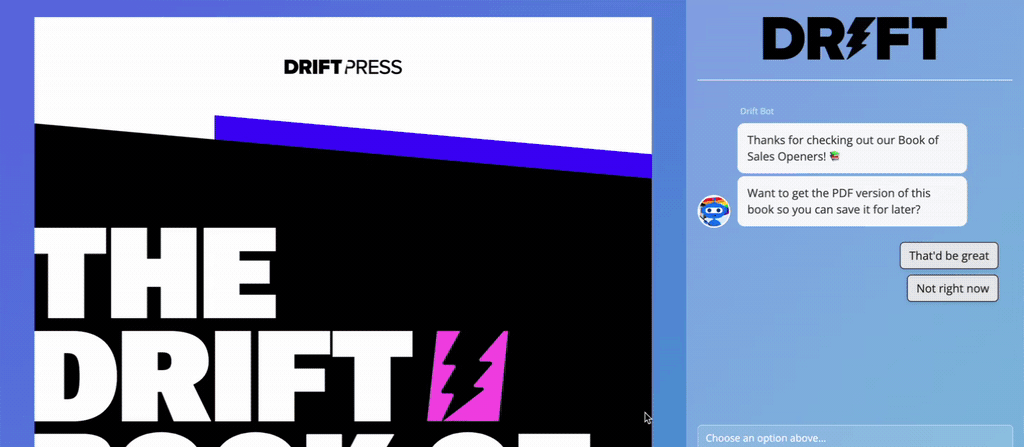
2. Build a Community Around Your Brand
Creating a community for your buyers and customers is a massive challenge. But, if you do it right, it’s one of the most rewarding ways to engage your audience.
At Drift, we created Drift Insider+ to act as a repository of every piece of content we’ve ever produced. For the over 55,000 members we have currently, Insider+ paints a picture of their interests and the problems they’re trying to solve based on the content they consume.
Not only does a community like Insider+ provide tons of first-party data, but it also delivers a valuable membership experience that influences pipeline. For example, we offer certifications for our products that people can share with their network which greatly boosts brand awareness.
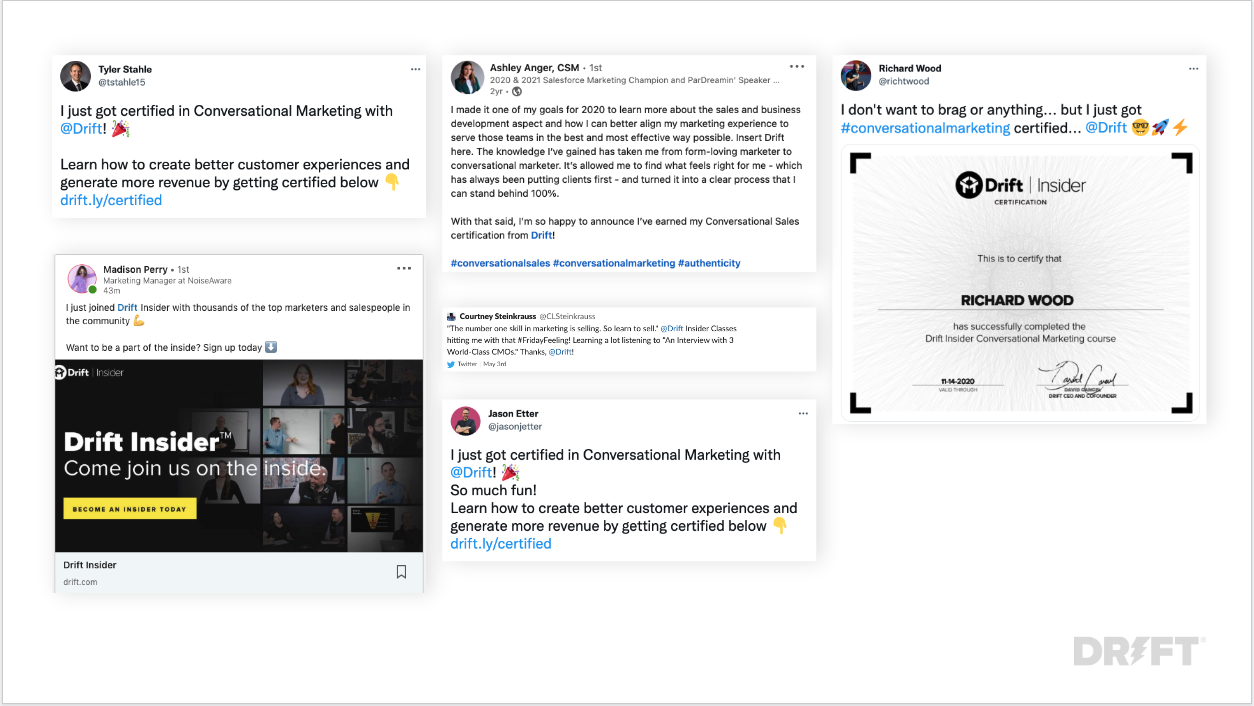
3. Substitute Personal Videos for Email
When we use email, it can be hard to remember that there is a human on the other side of the screen.
That’s why personalized video messages are a useful shortcut for engaging prospects. They give you the opportunity to send a truly customized message to a potential buyer while also putting a face to your name.
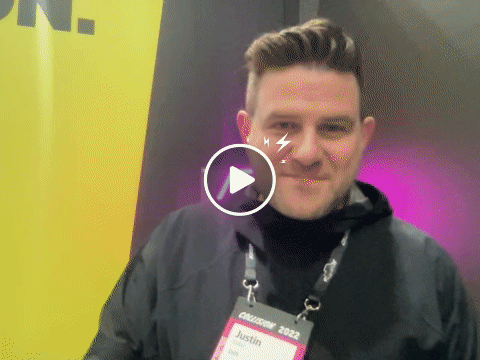
Remember: Personalized videos do not need to be huge productions. The more natural and authentic you are, the better chance you have of hooking in your buyers. Plus, with Drift Video, you can track who has watched your video and even allow viewers to chat with you through the built-in chatbot — which is a great opportunity to learn a little more about your buyer.
4. Roll Out Personalization Across Your Entire Website
Personalization isn’t restricted to one area of your website. In fact, with hyper-targeted pages and campaigns, you can work wonders for engaging and converting your top target accounts.
To do this, you need to leverage all the information you have about your site visitors, even if you haven’t talked to them yet. For example, you already know what company a site visitor works for. So you can use that information to personally address your audience through your chatbot, call out the company’s name in the headline of the page, or change up your copy to draw on industry verbiage and unique business needs.
Once you’ve got the conversation going, you can build an even more personalized buying journey with relevant recommendations. This way, you know that you are doing what is best for your buyer, rather than what is best for your business.
Take a Bite Out of the Cookieless Future
All four of the strategies I’ve covered above engage website visitors without relying on an ounce of third-party data.
Even better, these strategies leverage first-party data. And because first-party data enables you to create personalized experiences using information that has been explicitly entrusted to you, it automatically results in more quality engagement and happier customers.
For us, the cookieless future is bright. With the help of Conversational Marketing platforms such as Drift, the most successful brands will be able to prioritize understanding their buyers and building trust — and that is sure to pave the way for authentic human experiences that will keep your buyers and customers coming back for more.





